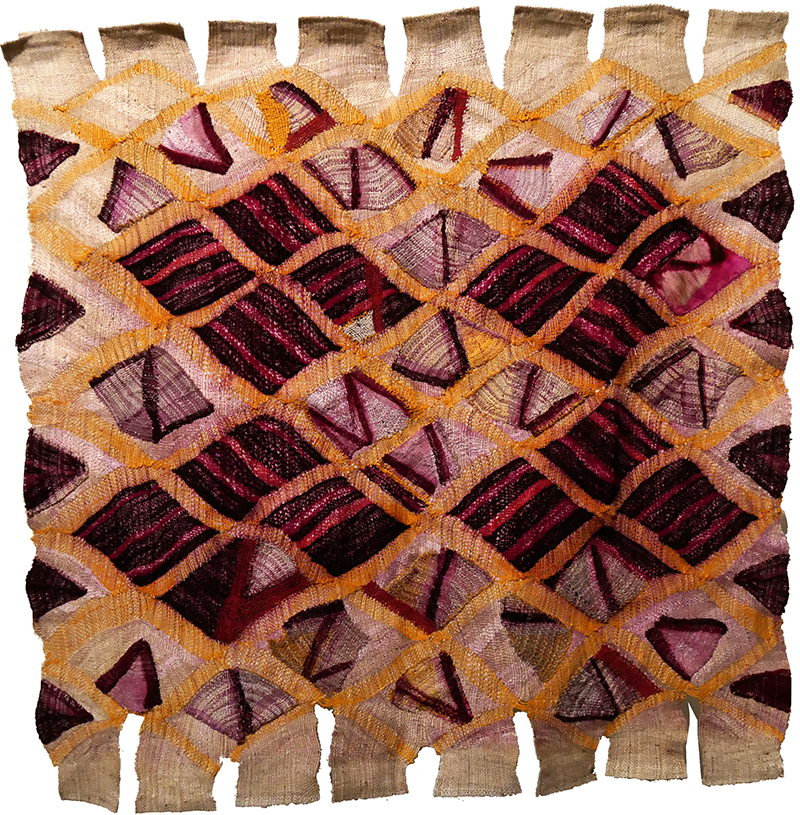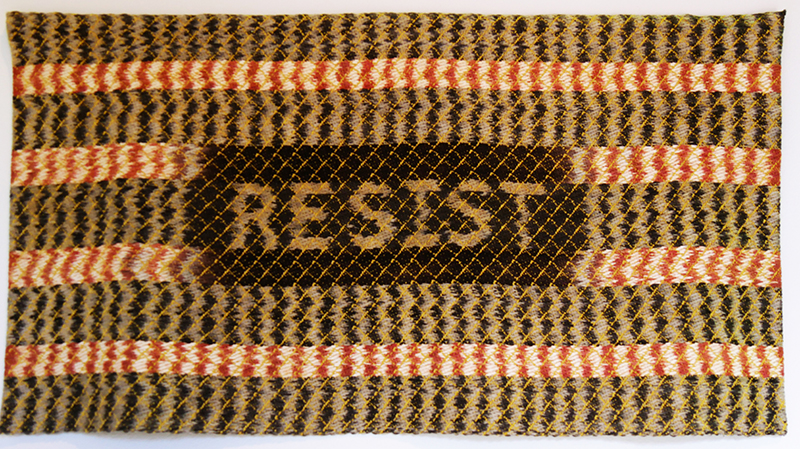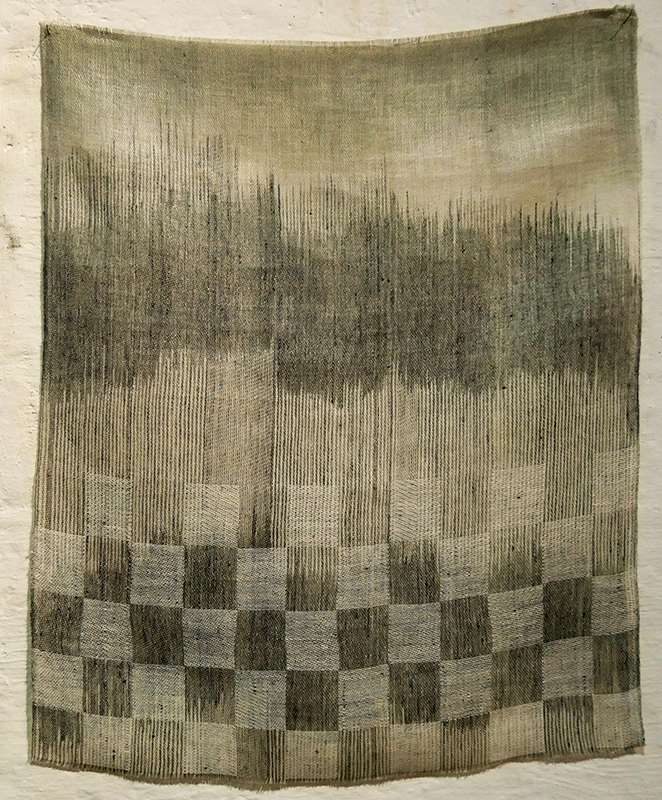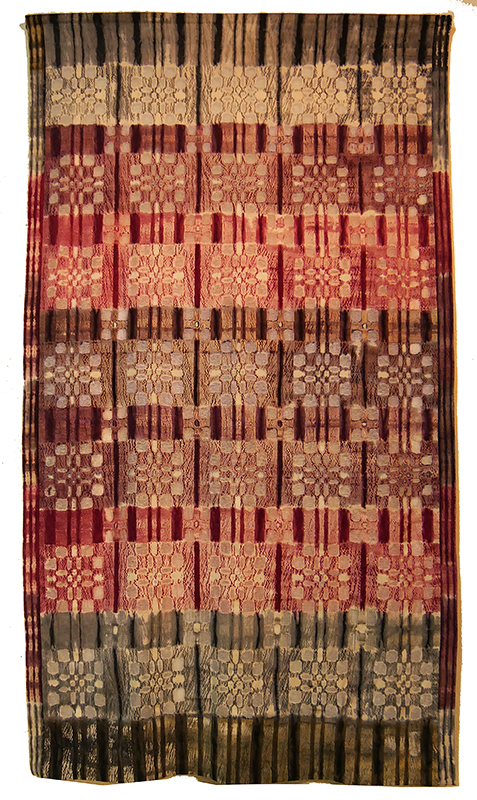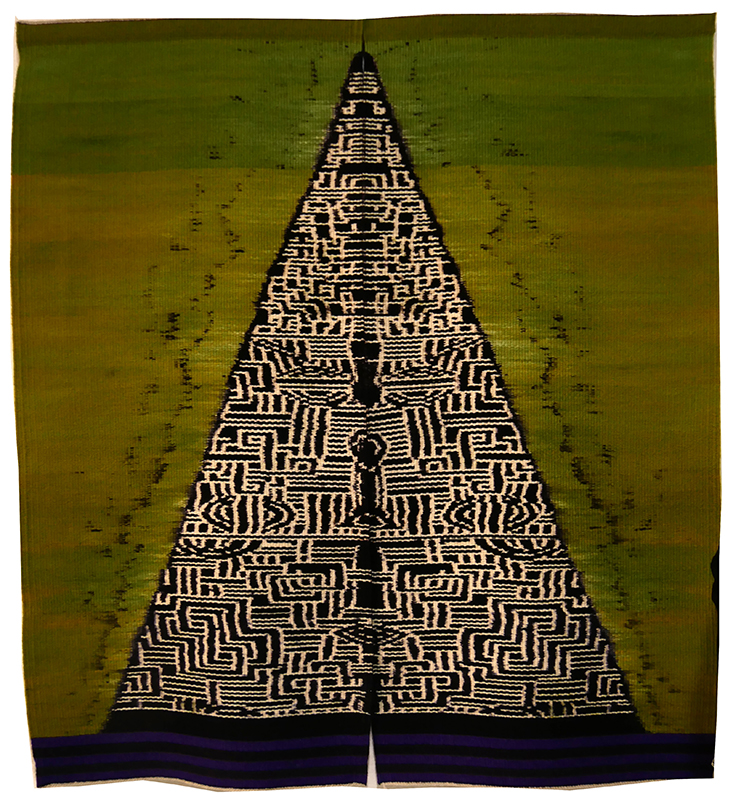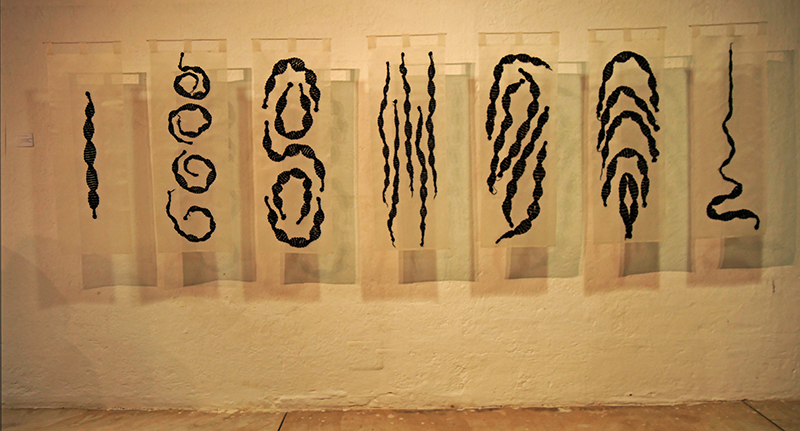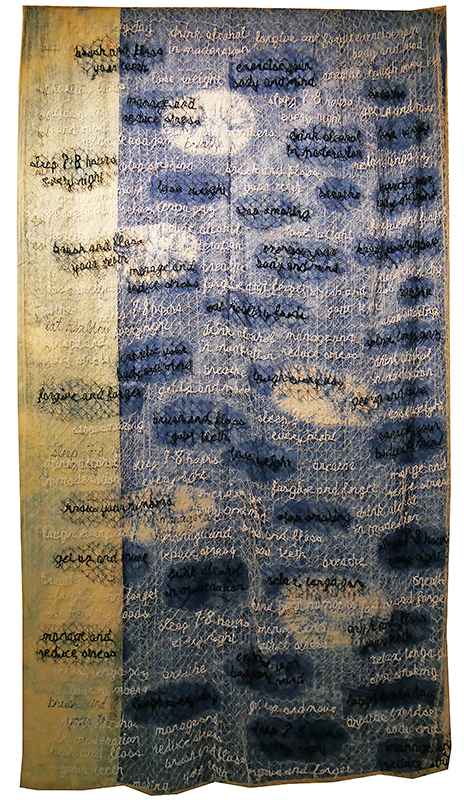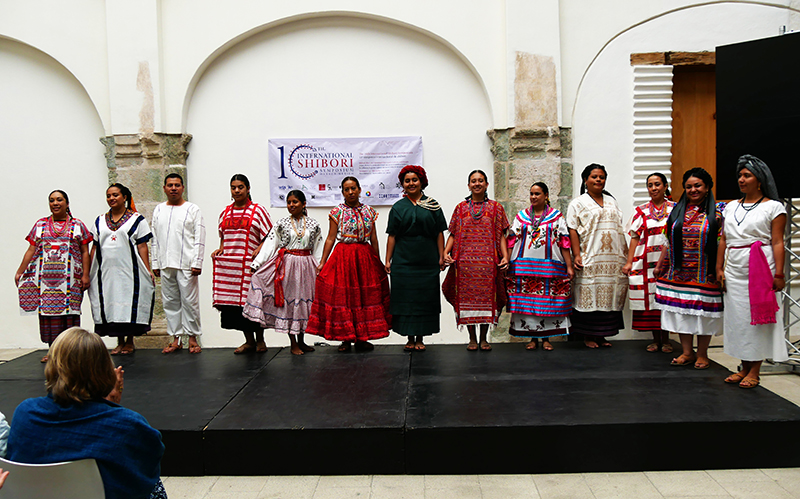
Held in Mexico from 16 to 20 November 2016, this symposium was the first I was able to attend. It was a great pleasure to experience it myself. The event attracted some 300 participants, most of them from the USA (130) followed by Japan (45), Mexico (17), Australia (15), Sweden (12), Chile (9), the UK (8), India (6) and a number of individual participants from other countries in Europe, Asia and Central and South America.
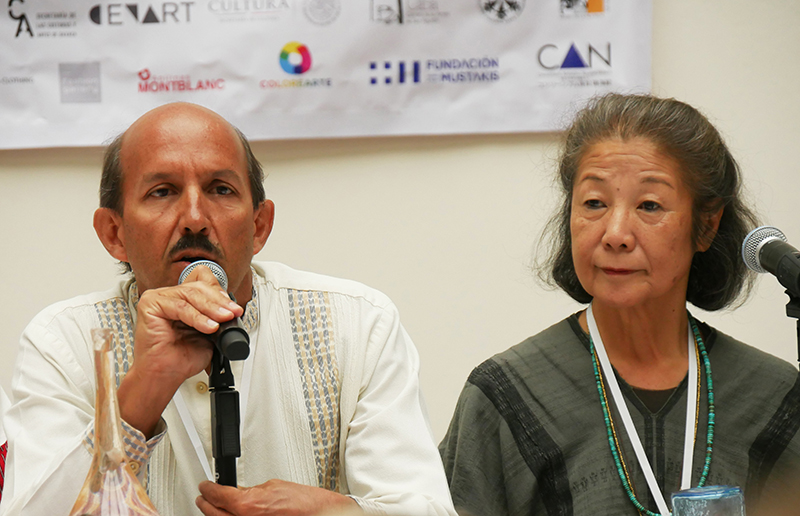
The organisers – the World Shibori Network under the direction of Yoshiko Wada in conjunction with Alejandro de Ávila, curator of the Oaxaca Textile Museum – had prepared a comprehensive programme. It was difficult to select among the lectures I did not wish to miss and even more difficult to keep up with my selection as the time-keeping in the three lecture rooms of the Centro Cultural San Pablo was somewhat relaxed. On the other hand, the many different exhibition openings and celebrations at the beginning and end of the symposium were perfectly organised.
Our Mexican hosts were very keen to illustrate all the living textile arts still in existence in Mexico. The demonstration of traditional costumes at the opening, presented by ordinary women who wore costumes from their own regions, left a deep impression on the participants.
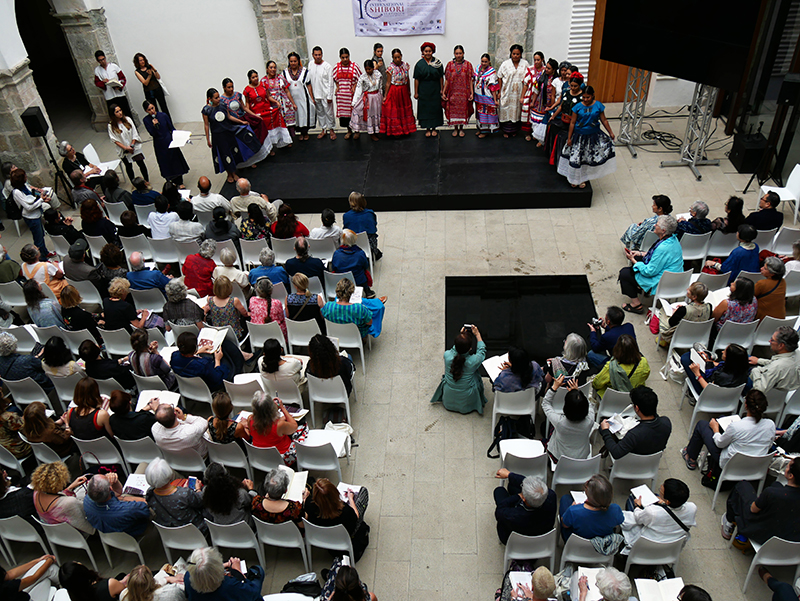
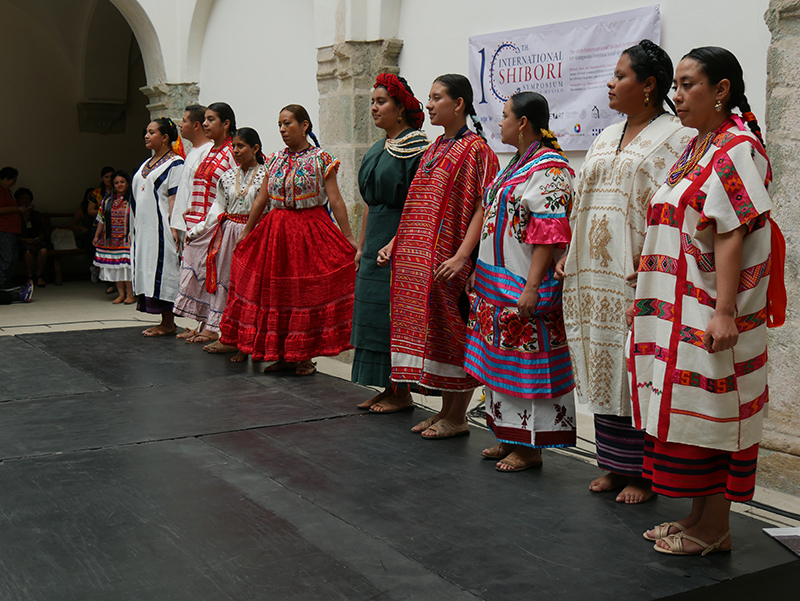
In the Textile Museum, curator Alejandro de Ávila had arranged the “World of Shibori and Ikat” exhibition alongside another wonderful show entitled “To Spin the Wind – The Plumed Weavings of Mexico”, co-curated by Hector Meneses, the museum director. A textile market of very high quality was set up in the courtyard of the Centro Cultural San Pablo adjacent to the Textile Museum, with weavings from the surrounding villages and various parts of Mexico where silk is produced, natural dyestuffs are used and shawls etc. are woven. Cotton is processed in the same way, partly to produce the well-known Mexican rebozo shawls whose tie-dyed ikat warps were the focus of the participants’ interest. Wool is employed chiefly in the finely woven and plant-dyed rugs, such as those produced in large quantities by the Zapotec weavers of Teotitlán del Valle (I had previously experienced these during a visit to the artisans while on a tour organised by “Traditions Mexico“).
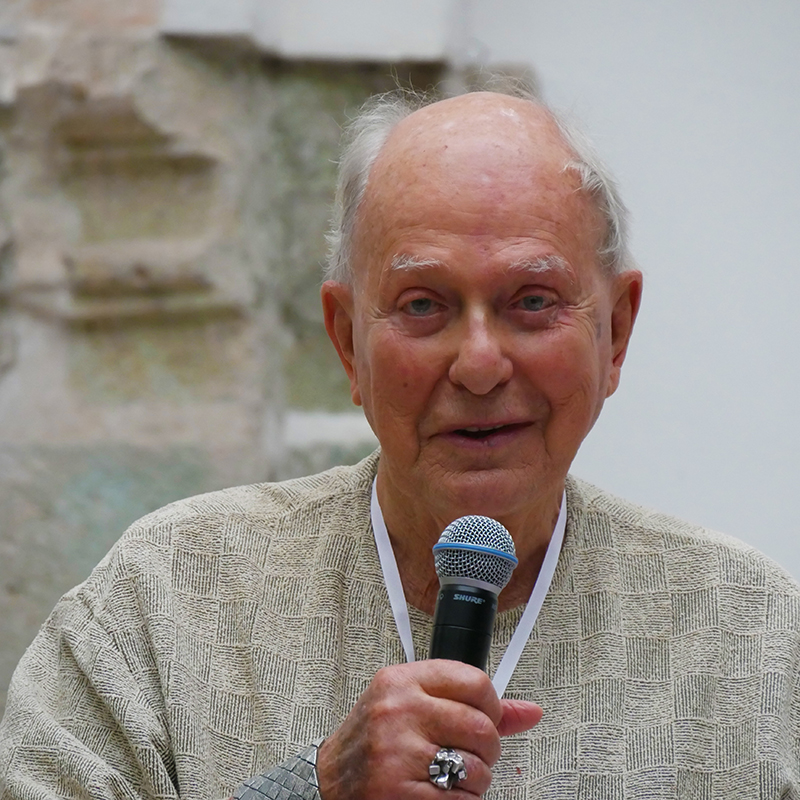
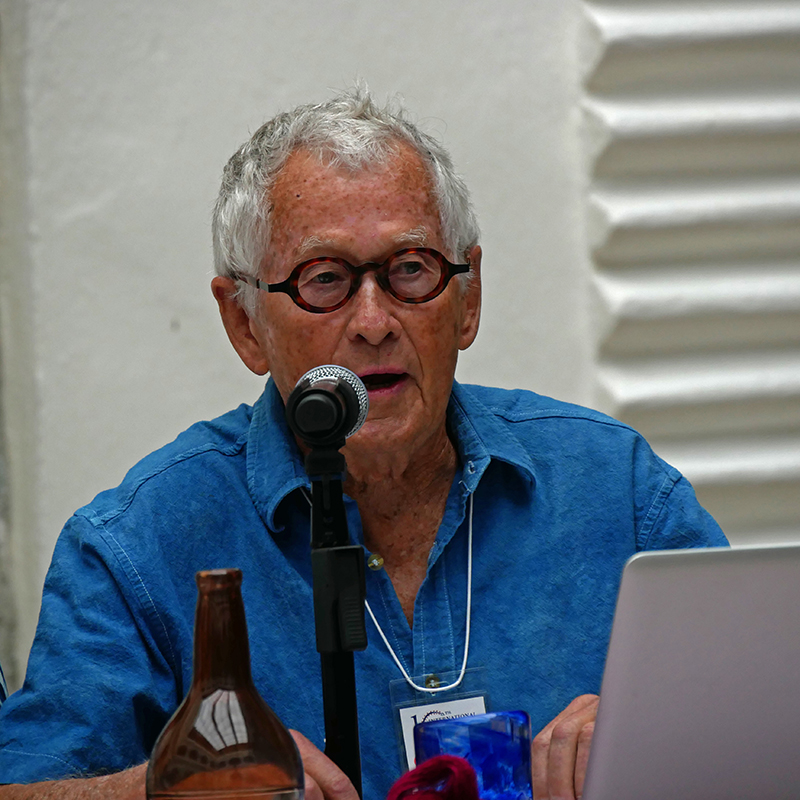
My selection of lectures included a presentation on tie-dyeing techniques used around the Mediterranean by Françoise Cousin, the former textile curator of the Musée du Quai Branly in Paris, and an equally informative talk by Alejandro de Ávila on resist dyeing in Mexican history. Marta Turok talked about 30 years of protecting the purple snails and new strategies for saving this dyeing technique (seeing a púrpura dyer at work on location was the highlight of my trip with “Traditions Mexico”). There were several lectures on the rebozo shawl, one of them by Yosi Anaya who threw light on its occurrence in contemporary Mexican art and its role in establishing identity.
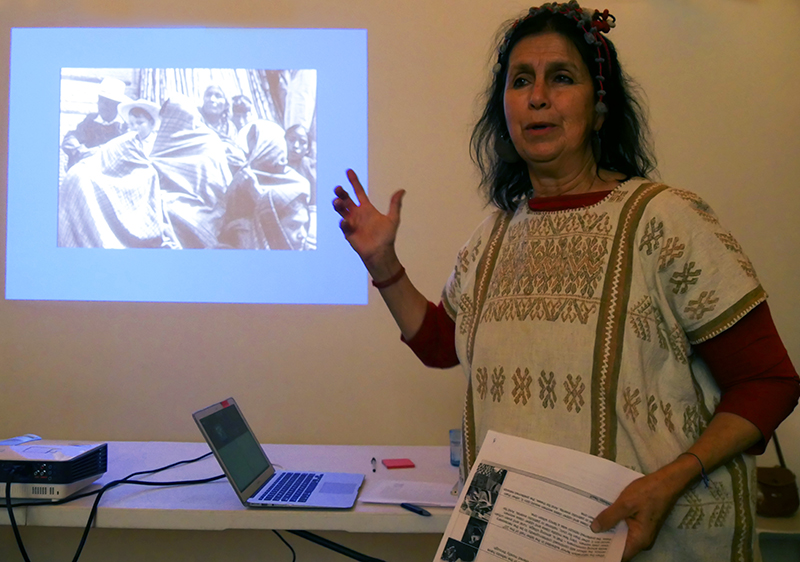
Ana Paula Fuentes talked enthusiastically about living textile traditions, sustainability and community empowerment in artisan groups.
French dyer Michel Garcia who is well-known in shibori circles spoke on inspiration drawn from antique traditions – natural dyes on fibre. His workshops were in high demand, but luckily it was possible to attend as a spectator and watch him work.
Among the Japanese, I listened to Hiroko Watanabe’s talk on her travelling exhibition of contemporary Japanese textile art, a real success story. The highly active and enthusiastic shibori craftsman Hiroshi Murase talked about an attempt to replicate a dyed object from the Textile Museum of Oaxaca (Tejido Amarrado Skirt) using ancient techniques from the Japanese town of Arimatsu.
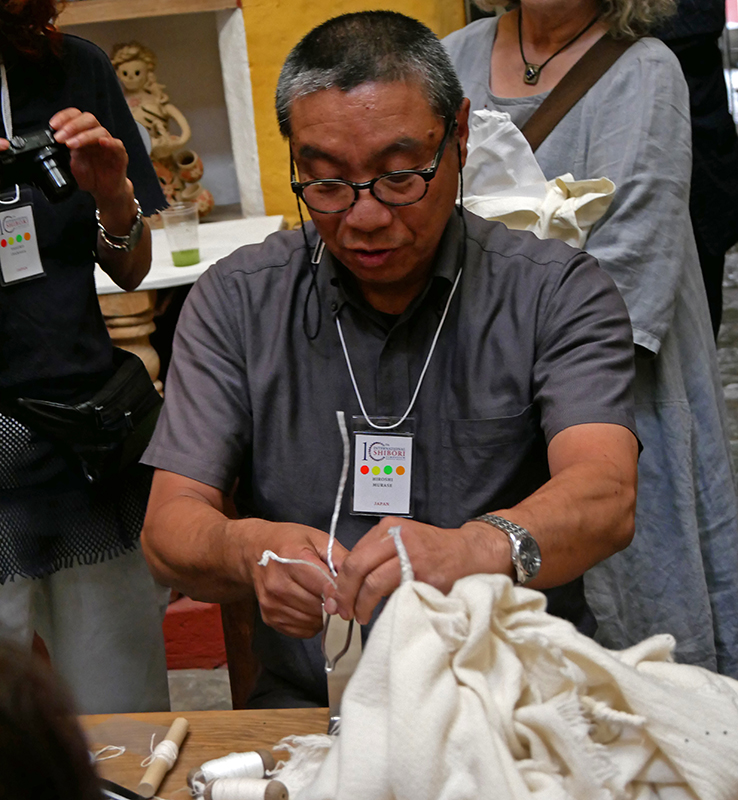
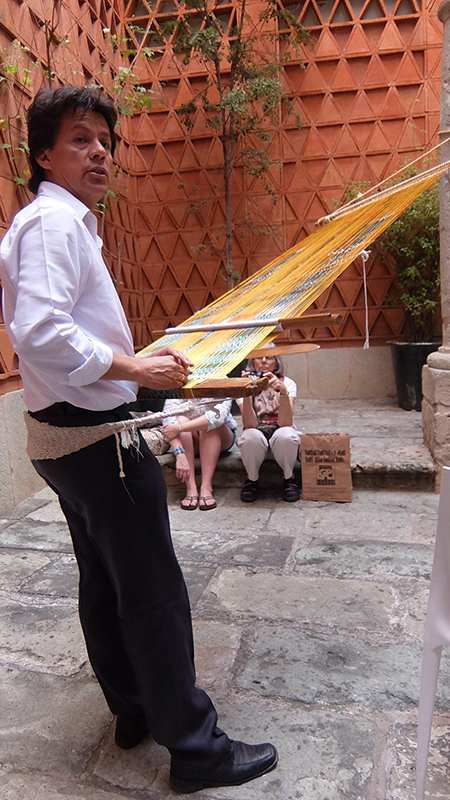
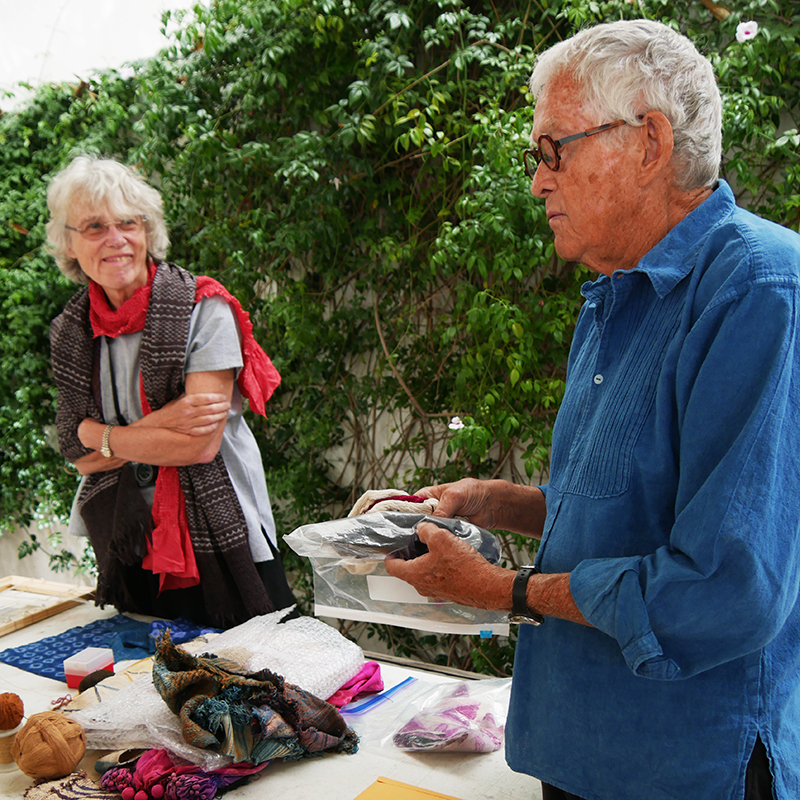
Among the many demonstrations, I liked the “Four Selvedge Scaffold Weaving of Pre-Columbia” by Jim Bassler and Catherine Ellis who addressed their subject with a great deal of knowledge and wit. Furthermore I was impressed by the weaver and dyer Jacobo Mendoza from Teotitlán del Valle who, with the help of his entire family, clearly demonstrated the complete production process of the finely woven carpets, beginning with spinning and dyeing using natural materials.
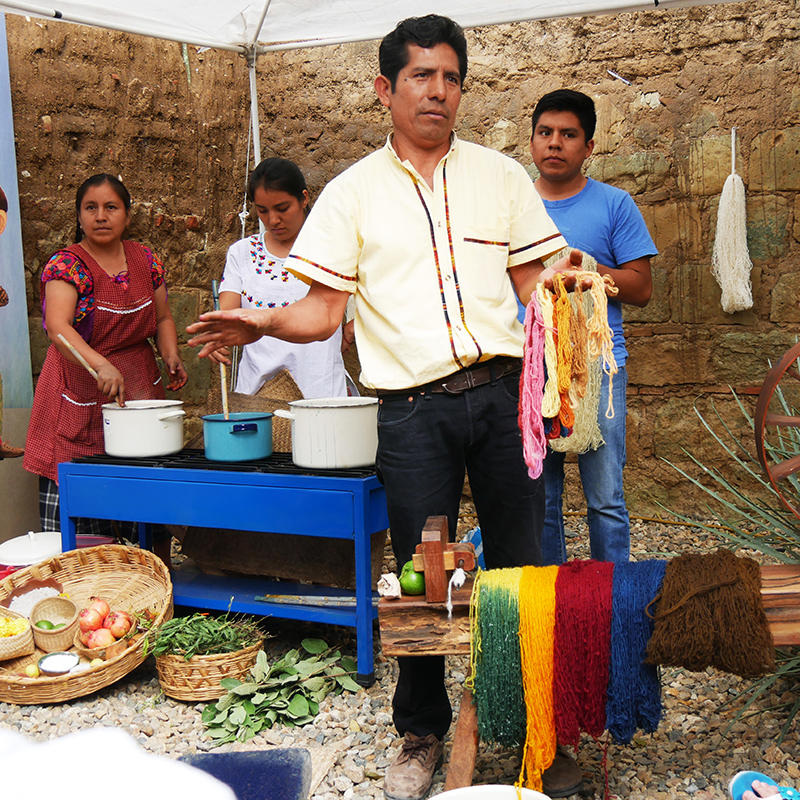
Amazing folding techniques were presented by Yoshiko Wada, Bennett Dubiner, Tomas Robefelt and Margot Wecksler in a demonstration entitled, “2D to 3D: Paper Folding for Dimensional Design”.
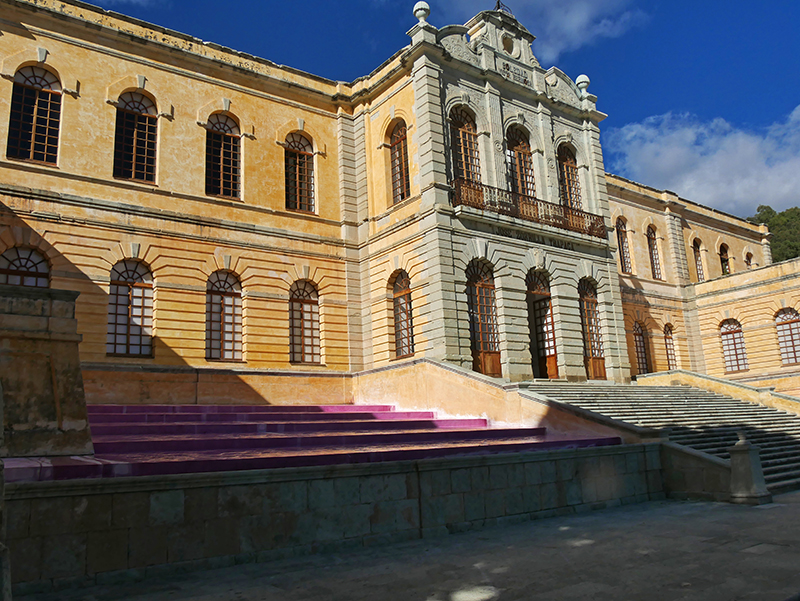
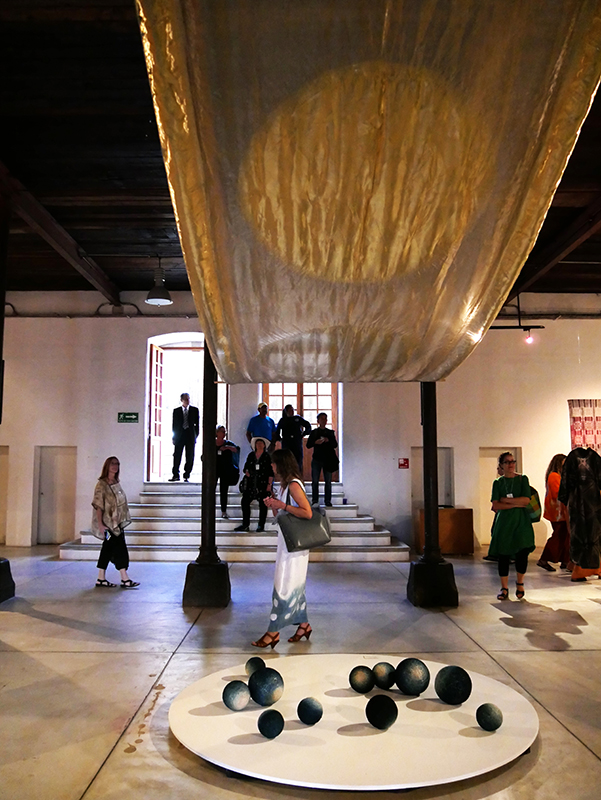
In addition to lectures, demonstrations, workshops and various exhibitions spread across Oaxaca, a major shibori exhibition addressing artists had been organised – “Contemporary Art of Shibori and Ikat” combined with “Wearable Art of Shibori” – presented at the Centro de las Artes de San Agustin (CASA) and curated by Yoshiko Wada and Trine Ellitsgaard (a Danish weaver living in Oaxaca). In the run-up it became obvious that the exhibition space would be insufficient, but the curators did a good job in these adverse conditions. The room – the hall of a former spinning and weaving mill – showed similarities to the exhibition spaces of the Łódź Textile Museum in Poland. The submissions were highly diverse in standard and included a number of interesting new works, such as “Tears of Heaven” by Mascha Mioni, 2016; “Mountain for the Buddha” by Mary Zicafoose, 2015; “Shawl: Study in Cutch” by Barbara Zaretsky, 2016; “Reality & Dreams” by Sandra Clark, 2015; “Folded and Flat” by Ana Lisa Hedstrom, 2016; “Olinda Dusk” by Sheri McNerthney, 2015; “Information Cloud” by Susan Taber Avila, 2015; “Fabricated Conditions and Big Water” by Åsa Pärson, 2015/2016; “The Darned Roses” by Catherine Ellis, 2016; “Resist” by Wendy Weiss, 2016; “Diagonal“ by Barbara Rogers, 2015; and “Snake Skins” by Yosi Anaya, 2016.
I had already seen pictures of works by Jim Bassler but was now able to view them in real life for the first time. He is a true weaver, a great artist and certainly an excellent teacher. In Oaxaca he played a brilliant role in his modest way. I loved the two works using feathers he produced for the Plumed Weavings of Mexico exhibition as much as his pieces in the main shibori exhibition.
The works by the other well-known Japanese artists, Hiroyuki Shindo and Junichi Arai, were very similar to those shown in previous Shibori Symposium exhibitions. They made me wonder whether we want to see new things too frequently. On the other hand, the artists were asked to present new work.
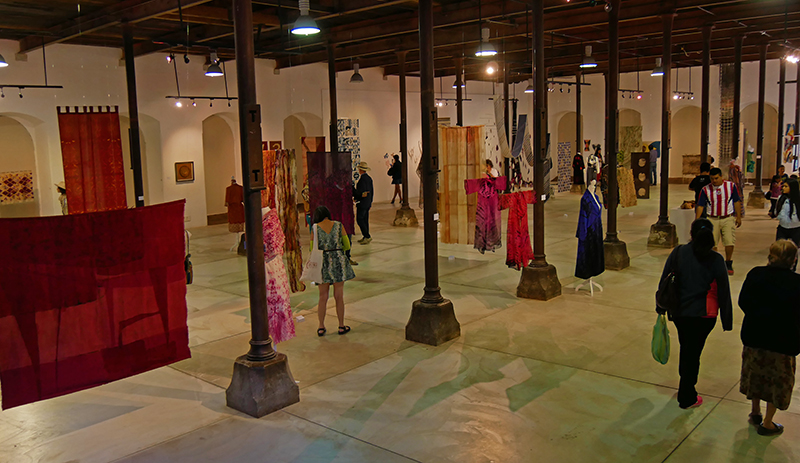
The exhibition was enriched by two smaller exhibitions of kimonos presented in adjacent rooms of CASA (Indigo Earth: Shibori Kimono, Past and Present and clothing designs by Carla Fernández), and my overall impression of these was excellent.
The symposium was a true feast for the eyes for all those fortunate enough to be there!
Is there anything to criticise? What I heard from other participants mainly concerned the difficulty in following the programme. As the organiser of seventeen similar international events (the European Textile Network Conferences), alternative programme sequences immediately sprang to mind: holding all the most important lectures in the largest hall and on one day, if possible with simultaneous translation provided for the day. The various smaller lectures on more diverse themes can then be spread over the other days and across different rooms. Moreover, to some extent the event itself appeared like a purely American-Japanese affair, albeit one hosted by Mexicans.
However, I know that it is easier to apply criticism than to do the actual work. I would thus like to express my full respect for a tremendously successful achievement by all those involved in the organization.
